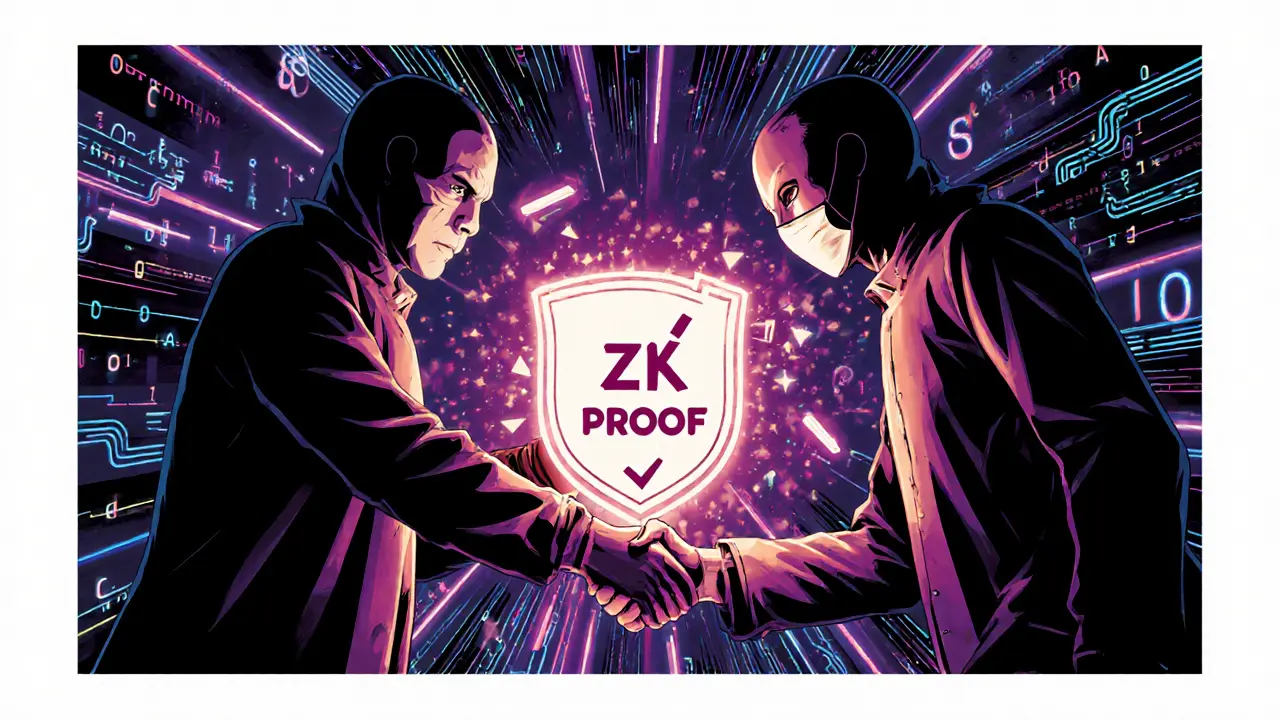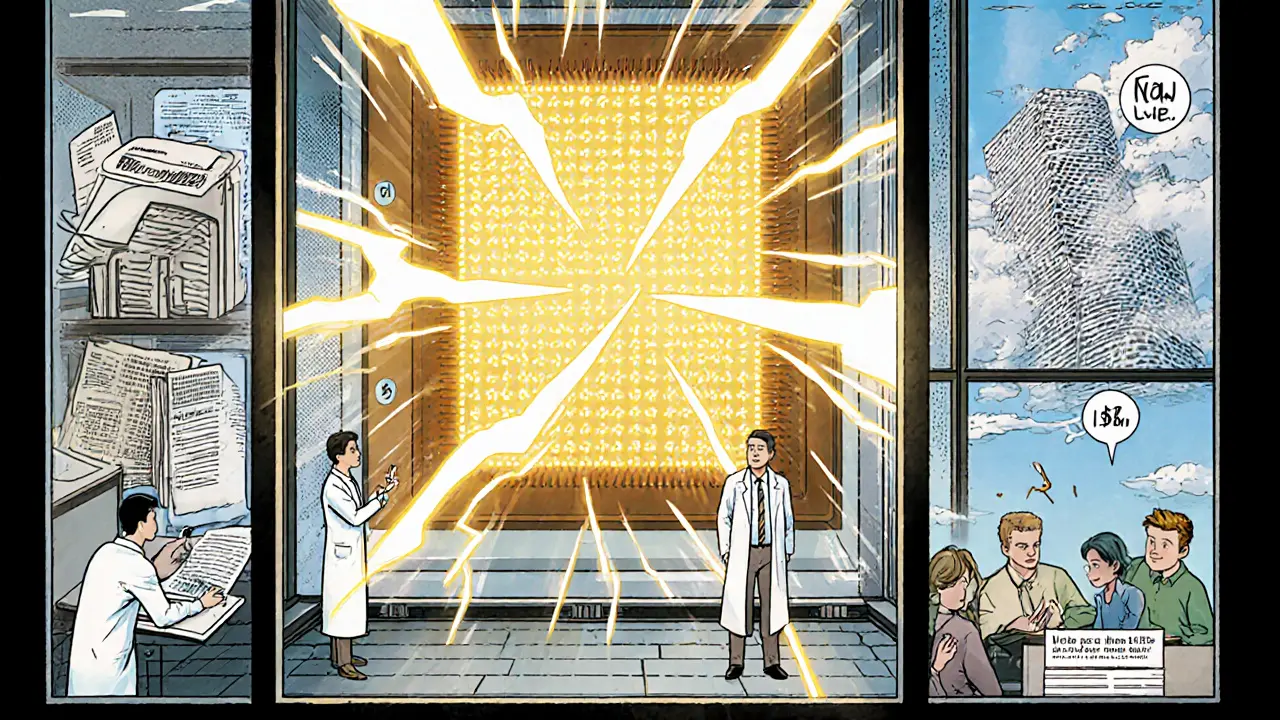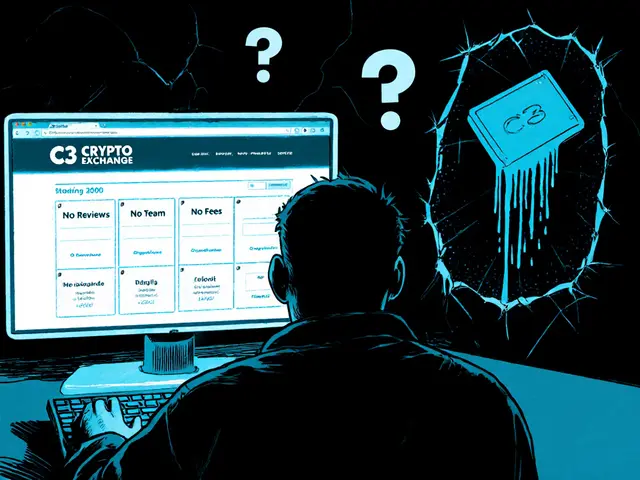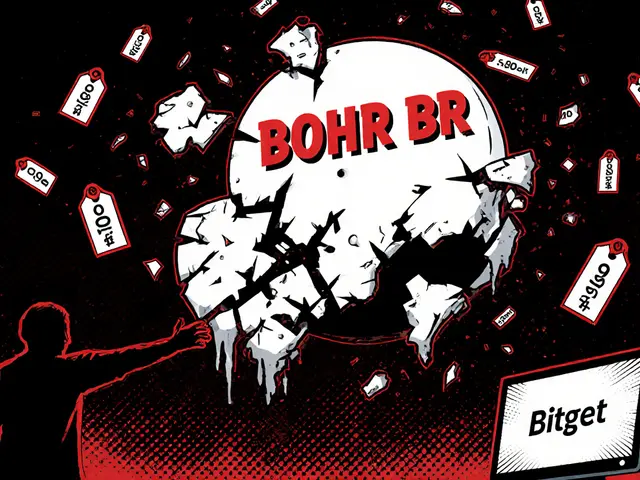- Home
- Blockchain
- Future of Zero-Knowledge Technology in Blockchain

Future of Zero-Knowledge Technology in Blockchain
ZKP Cost Savings Calculator
Estimate Your Savings
Calculate potential gas fee savings when using zero-knowledge proofs compared to standard Ethereum transactions.
Estimated Results
Imagine you can prove you’re over 18 without showing your ID. Or verify you have enough money to buy a house without revealing your bank balance. This isn’t science fiction-it’s zero-knowledge proof (ZKP), and it’s already reshaping how blockchains work. By 2025, ZKPs are no longer a lab curiosity. They’re the backbone of real-world systems handling billions in transactions, protecting user data, and meeting strict financial regulations-all while keeping things fast and scalable.
What Zero-Knowledge Proofs Actually Do
At its core, a zero-knowledge proof lets one side prove something is true without giving away any extra details. Think of it like proving you know a secret password without saying the password. In blockchain, this means you can verify a transaction is valid-say, that you own the crypto you’re spending-without exposing your wallet address, balance, or transaction history.
This solves two of blockchain’s biggest problems: privacy and scalability. Public ledgers like Bitcoin and Ethereum show every transaction to everyone. That’s great for transparency, but terrible for confidentiality. ZKPs fix that. They let users stay private while still letting the network verify everything is above board.
It’s not magic-it’s math. The original idea came from Shafi Goldwasser, Silvio Micali, and Charles Rackoff in 1985. But it wasn’t until Zcash launched in 2016 with zk-SNARKs that ZKPs became usable in real systems. Today, projects like zkSync Era, Starknet, and Polygon zkEVM are processing thousands of transactions per second on Ethereum, all using ZKPs to compress data and hide details.
The Two Main Types: zk-SNARKs vs. zk-STARKs
Not all zero-knowledge proofs are the same. Right now, two types dominate: zk-SNARKs and zk-STARKs. They’re both powerful, but they work differently-and each has trade-offs.
zk-SNARKs are smaller and faster. A proof is only about 200 bytes, which saves space and cuts costs. But they need a one-time “trusted setup,” where a group of people generate secret keys. If even one of those people keeps a copy of the secret, they could fake proofs. That’s a risk, even if the setup was done securely.
zk-STARKs don’t need a trusted setup. They’re “transparent,” meaning anyone can verify the process was honest. That’s a big win for trust. But the proofs are bigger-around 45KB-which means they take more space and are slower to verify. They’re also harder to build, requiring more advanced math.
Most major ZK rollups today use zk-SNARKs because they’re more efficient. But zk-STARKs are catching up fast. As hardware improves, the size gap is narrowing. By 2025, zk-STARKs could become the default for applications where trust matters more than speed.
Why ZKPs Are Scaling Blockchains
Ethereum’s base layer can handle about 15 transactions per second. That’s not enough for global use. ZK rollups change that. They bundle hundreds of transactions into one proof, then post that proof to Ethereum. The network doesn’t need to check each transaction-it just checks the proof.
That’s how zkSync Era handles 2,000 TPS. Starknet does 1,500. Both are 10 to 50 times faster than Ethereum itself. And because they compress data, they cut gas fees by up to 90%.
It’s not just about speed. It’s about cost. Generating a ZK proof used to take minutes and cost hundreds of dollars in computing power. Now, thanks to new hardware and optimized circuits, it takes seconds and costs pennies. Visa’s 2024 pilot showed ZK-based auto-payments reduced verification costs by 87% compared to older methods.
By the end of 2025, experts predict proving costs will drop below $0.001 per transaction. That’s cheaper than sending a text message. At that point, ZKPs won’t just be for big DeFi apps-they’ll be in everyday payments, loyalty programs, and even digital IDs.

Where ZKPs Are Already Being Used
ZKPs aren’t just theoretical. They’re live in real businesses.
BlackRock tokenized $240 million in U.S. Treasuries on Ethereum using ZKPs to verify investor eligibility without exposing identities. HSBC cut settlement times for gold trading by 73% using ZK proofs to confirm prices privately between parties. Estonia ran its entire municipal election in July 2024 with ZK-based voting-217,000 votes, all private, all verifiable.
Even governments are taking notice. The EU’s MiCA framework officially recognized ZKPs as a compliant privacy tool in July 2024. That means banks and fintechs can use them without breaking anti-money-laundering rules.
On the other hand, the U.S. SEC hasn’t clarified how ZK-based anonymous transactions fit into securities law. That uncertainty is slowing adoption for some U.S.-based projects. But globally, the trend is clear: privacy with accountability is the future.
The Hard Parts: Why So Few Developers Use ZKPs
Here’s the catch: building with ZKPs is hard.
Most blockchain developers know Solidity. But ZK circuits? That’s a whole different world. You need to understand finite field arithmetic, elliptic curve cryptography, and circuit design languages like Circom or Noir. GitHub surveys show developers need 3 to 6 months of extra training to get comfortable.
One Reddit user spent 117 hours debugging a single ZK circuit for a DeFi app. Another project had 427 open issues related to circuit compilation errors. Even with good documentation, it’s easy to make a tiny mistake that breaks security.
And it’s not just learning. Tools are still rough. zkSync has solid docs and 17 tutorials. But newer projects? Many have patchy guides and slow community support. Only 12% of blockchain devs today have the skills needed to build ZK circuits, according to HackerRank.
That’s why most ZK projects are still led by teams with deep crypto math backgrounds. But that’s changing. More universities are adding ZKP courses. Open-source templates are getting better. And tools like zkEVM are making it easier to write regular smart contracts that automatically compile into ZK proofs.
Hardware Is the Game Changer
One of the biggest bottlenecks in ZKPs has been computation. Generating a proof used to need a high-end server with 32GB of RAM and multiple cores.
Now, specialized hardware is making it faster. NVIDIA announced its “ZK Coprocessor” in August 2024, shipping in Q1 2025. It uses tensor cores-same ones used in AI-to speed up proving by 50x. That’s not a minor upgrade. It’s a revolution.
Imagine running a ZK proof on your phone. Not in a year. Not in five. By the end of 2025, experts say it’ll be possible. That means you could verify your identity, your age, or your payment eligibility-all without sending data to a server-using just your smartphone.
That’s the future: private, fast, and accessible. No middlemen. No data leaks. Just proof.

The Big Picture: ZKPs as Infrastructure
ZKPs aren’t just another blockchain feature. They’re becoming the foundation.
By 2027, SuperEx News predicts 70% of blockchain applications will use ZKPs as standard architecture. That’s not a guess-it’s a logical next step. Why? Because the alternatives don’t scale.
Ring signatures (like Monero) are private but slow. Confidential transactions (like Mimblewimble) are efficient but limited in functionality. ZK rollups do both: they’re private, scalable, and compatible with smart contracts.
And they’re not stopping at Ethereum. zkBridge launched in July 2024, letting users send private assets between Ethereum and Bitcoin. That’s huge. For the first time, Bitcoin’s security can combine with Ethereum’s flexibility-without sacrificing privacy.
McKinsey says ZKPs are one of the top three technologies reshaping digital infrastructure in 2025. The others? Generative AI and quantum-resistant crypto. That’s the league ZKPs are in now.
What’s Holding ZKPs Back?
It’s not lack of demand. It’s complexity and energy.
63% of audited ZK circuits have at least one critical flaw, according to Johns Hopkins professor Dr. Matthew Green. Most of these come from custom code-developers trying to do too much too fast. Best practices exist: start simple, use templates, test incrementally. But not everyone follows them.
Energy use is another concern. Generating ZK proofs still takes power. McKinsey warns that unless efficiency improves by 90%, mass adoption could stall. But hardware advances are already cutting that gap. NVIDIA’s coprocessor alone could reduce energy use by 80% per proof.
Regulation is uneven. The EU says ZKPs are compliant. The U.S. says “maybe.” That’s a problem for global projects. But as more institutions adopt ZKPs-like BlackRock, HSBC, and Estonia-the pressure on regulators to clarify rules will grow.
What Comes Next?
By 2026, ZKPs will be in:
- Healthcare: verifying patient consent without exposing medical records
- Supply chains: proving goods are ethically sourced without revealing supplier names
- Voting systems: enabling secure, anonymous digital elections
- Identity: replacing passwords with ZK-based digital IDs
The next big leap? ZKPs combined with AI. Imagine an AI agent proving it followed your rules without showing you its internal logic. That’s not far off.
For now, ZKPs are still in their early days. But they’re moving fast. What started as a cryptographic curiosity is now the quiet engine behind the most important blockchain innovations of our time. You won’t see them. But you’ll feel them-in faster apps, safer payments, and private transactions that just work.
What is a zero-knowledge proof in simple terms?
A zero-knowledge proof lets you prove something is true without revealing any extra details. For example, you can prove you’re over 21 without showing your ID, or that you own crypto without revealing your wallet address. It’s like knowing a secret password but only proving you know it-not saying what it is.
Are zero-knowledge proofs secure?
Yes, when built correctly. ZKPs rely on strong math that’s been tested for decades. But the code around them-like circuit designs-can have bugs. Studies show 63% of custom ZK circuits have critical flaws, usually from rushed or complex code. Stick to well-audited, standardized tools to stay safe.
What’s the difference between zk-SNARKs and zk-STARKs?
zk-SNARKs are smaller and faster but need a trusted setup, which creates a small security risk. zk-STARKs don’t need that setup-they’re more trustless-but they’re bigger and slower to verify. Most current apps use zk-SNARKs for efficiency, but zk-STARKs are gaining ground as hardware improves.
Can I use zero-knowledge proofs on my phone?
Not yet, but soon. Right now, generating ZK proofs needs powerful hardware. But NVIDIA’s new ZK Coprocessor, launching in early 2025, will make proving 50x faster. Experts predict smartphone-based ZK verification will be possible by the end of 2025, letting you prove identity or payment eligibility without sending data to servers.
Why are companies like BlackRock and HSBC using ZKPs?
They need privacy and compliance. BlackRock tokenized $240 million in U.S. Treasuries using ZKPs to verify investors meet rules without exposing their identities. HSBC cut settlement times by 73% by using ZK proofs to confirm private prices between trading partners. ZKPs let them follow regulations without sacrificing confidentiality.
Is ZK technology only for crypto?
No. While blockchain is the biggest user today, ZKPs are being tested in healthcare (patient consent), voting (Estonia’s 2024 election), supply chains (proving ethical sourcing), and digital IDs. Any system that needs to verify information without revealing it can use ZKPs.
How much does it cost to use a zero-knowledge proof today?
It varies. Generating a proof used to cost $10-$50. Now, with better hardware and optimization, it’s under $0.01 for simple cases. By mid-2025, experts expect costs to drop below $0.001 per transaction-cheaper than a text message. That’s what makes mass adoption possible.
Cormac Riverton
I'm a blockchain analyst and private investor specializing in cryptocurrencies and equity markets. I research tokenomics, on-chain data, and market microstructure, and advise startups on exchange listings. I also write practical explainers and strategy notes for retail traders and fund teams. My work blends quantitative analysis with clear storytelling to make complex systems understandable.
Popular Articles
About
DEX Maniac is your hub for blockchain knowledge, cryptocurrencies, and global markets. Explore guides on crypto coins, DeFi, and decentralized exchanges with clear, actionable insights. Compare crypto exchanges, track airdrop opportunities, and follow timely market analysis across crypto and stocks. Stay informed with curated news, tools, and insights for smarter decisions.






